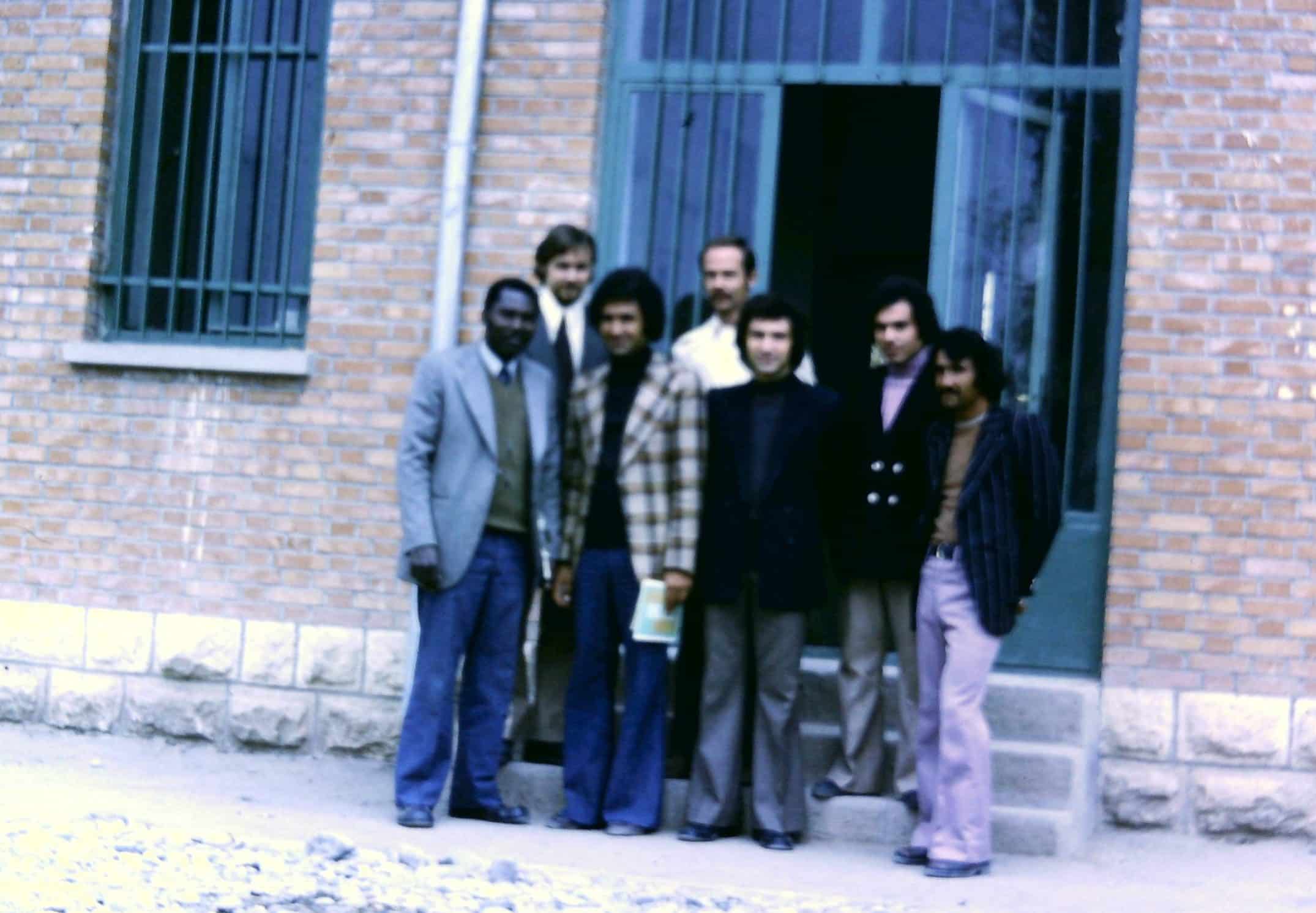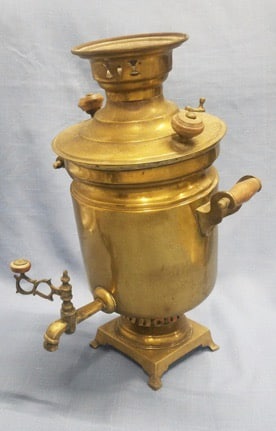Each morning the jeep panel-delivery truck from the Mianeh Office of Education exited the traffic circle and stopped where I stood. When I opened the creaking door at the back of the truck, Mr. Pezeshki, the school principal, patted a space on the dusty wooden bench to his right. As I sat, we shook hands.
“Salaam, Mr. Jim,” he said in Farsi, always with a broad smile. “How are you? I hope you are well?”
I replied that I was well and the jeep slowly continued to rattle its way through the circle to pick up two more teachers, Mahmood and Hasan. More salaams and handshaking, and another school day was about to begin.

Staff of Mahdrasay Hersae
The wooden seats, bumpy pavement, and the ratcheting sound of the Jeep’s worn suspension kept our conversation to a minimum. For the rest of our five-kilometer ride, I looked out the front window at the many small tea shops, the chai khane, that dotted Mianeh’s only main street. We left town for the Madrasay Herfae, the boys’ trade school where I taught auto mechanics, diesel mechanics, and welding.
Tea drinking is a daily ritual of Iran’s culture. The samovar that heats the water for tea is found in every tea house, home, small business, and office. Tea was, and perhaps still is, more than just a social lubricant; it helped to form the structure of the workday.
As soon as we piled out of the truck and shook off our suit coats in the school’s foyer, Masood, the school’s chai guy, greeted each of us with a salaam and a handshake.
As we entered Mr. Pezeshki’s office, he called aloud, “Chai ver,” and Masood rushed through the school orchard to his small out-building to check that the water was bubbling in his big brass kerosene-fired samovar.
With the precision of years of experience, Masood performed his tea-making routine each day. On the samovar’s crown, loose leaves of a strong black tea steep in a teapot. Masood pours some of the tea into four glasses, half-filling each and topping them with more hot water from the samovar’s reservoir. He places each glass in a china saucer and moves the four saucers to small brass trays. Masood then takes his small hatchet and carves white crystalline chunks from a cone of sugar, called gand, and places them in piles on the lip of the trays.
Masood ceremonially enters Mr. Pezeshki’s office carrying a large serving tray and hands each of the faculty a small tray with a cup of steaming tea and a stack of four chunks of sugar on the tray’s lip. The most important utensil is the deep-sided china saucer. We pour our hot tea from the cup to the saucer to cool the tea. While my tea cools in the saucer, I pick a piece of gand from my brass tray and put it in my mouth to sweeten my tea as I tip the saucer to my lips.
We drank our tea and talked about local news, weather, plans for the weekend, and any topic on our minds. The talk soon turned to lessons to be taught, plans for learning activities, and supplies we needed.
These daily conversations over tea in Mr. Pezeshki’s office created an essential social interaction, all-important personal connections, and stimulated a collegial atmosphere. The ritual while seemingly routine, was filled with meaning and signaled the start of a new school day.





